
Dev Deepavali, also known as 'the Diwali of the Gods' or 'Festival of Lights of the Gods' is a Kartik Poornima festival celebrated with fervor in Varanasi, Uttar Pradesh, India. Dive in to know all about Dev Diwali 2026 through this article.
What is Dev Diwali?
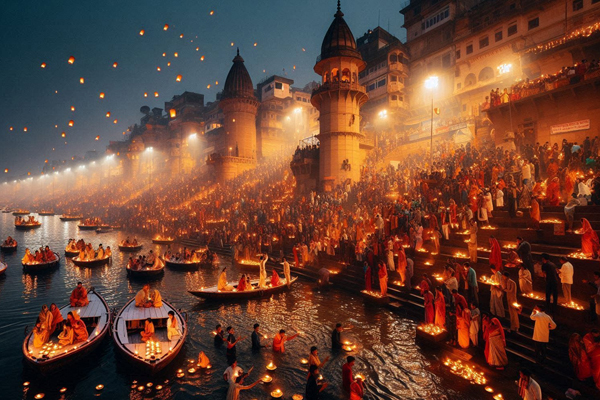
Dev Deepawali, also known as Dev Diwali, is observed to commemorate the victory of Bhagawan Shiva over the demon Tripurasur. Consequently, Dev Deepawali Utsav is also known as Tripurotsav or Tripurari Purnima, and it is celebrated on the auspicious day of Kartik Purnima. The Gods are welcomed and in their honor every year millions of earthen lamps are lit at Varanasi. On Dev Deepawali, devotees take a holy dip in the Ganges on the auspicious day of Kartik Purnima and light earthen lamps (Diyas) in the evening. At dusk, millions of earthen lamps illuminate the steps of all the Ghats along the Ganges' riverfront. Not only are the Ghats of the Ganges lit with millions of Diyas, but so are the temples of Benares. The festival is also observed as Tripura Purnima Snan.
When Is Dev Diwali Celebrated In 2026? Date, Tithi, Muhurat
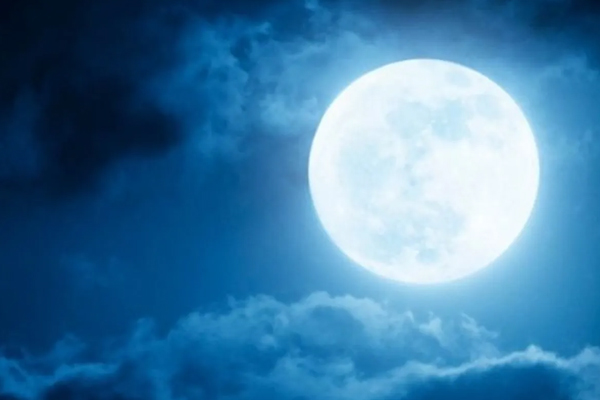
The Diwali of the Gods falls on the full moon of the month of Kartika (November – December in the Gregorian calendar) and takes place fifteen days after Diwali. It is a five-day festival which starts on the 11th lunar day of Kartik month, known as Prabodhini Ekadashi and lasts till the 15th lunar day on Kartik Purnima.
Dev Deepavali on
Tuesday, November 24, 2026
Pradoshakal Dev Deepavali Muhurat - 05:08 PM to 07:47 PM
Duration - 02 Hours 39 Mins
Purnima Tithi Begins - 11:42 PM on Nov 23, 2026
Purnima Tithi Ends - 08:23 PM on Nov 24, 2026
Dev Diwali Katha (Story)
Dev Deepawali is celebrated in honor of Bhagwan Shiva, who defeated three demons known as Tripurasura: Vidyunmali, Tarakaksha, and Viryavana. Bhagwan Shiva won a victory over them and destroyed the three cities created by the demons which is also the reason this day is called 'Triporotsav'. Accordingly, it is believed that every November, during the month of Kartik, the Gods visit the city of Bhagwan Shiva to commemorate the victory.
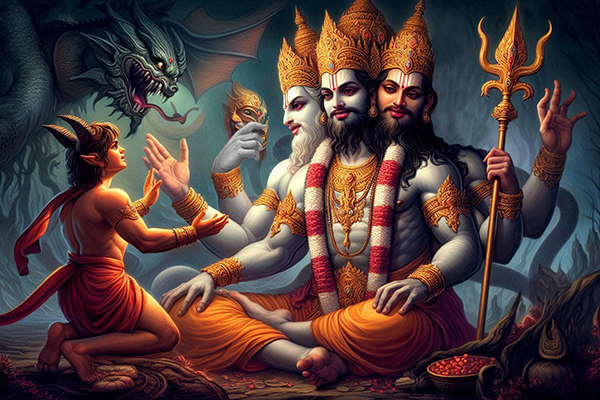
Tripurasura spent one lakh years in penance in Prayagraj. Devas and other living beings were terrified when they saw their devotion. They dispatched Apsaras (nymphs) to demolish their Tapasya. Bhagawan Brahma was pleased with their zealous penance and bestowed a boon upon them. Tripurasura asked for immortality, to which Brahma denied saying, he cannot defy the law of universe as anything that is born, must ultimately die. They asked for three cities for three brothers, one on Earth made of iron, one in the sky made of silver and one in heavens made of gold. And they were promised that they would not die until all the three cities were destroyed by one bow when they align together, which happens only once a year on full moon of Kartik month. They were granted these powerful boons.
But with time, they abused their powers and annihilated the planet. The Devas requested that Tripurasura be destroyed by Bhagawan Brahma and Shiva. Bhagawan Shiva, on the other hand, refused because the Asuras were not sinners. Bhagawan Vishnu even duped Tripurasura into abandoning the Vedas and Bhagawan Shiva to become sinners. He was, however, unsuccessful. In the meantime, Tripurasura attempted to conquer Mount Kailash. As a result, Bhagawan Shiva agreed to exterminate Tripurasura.
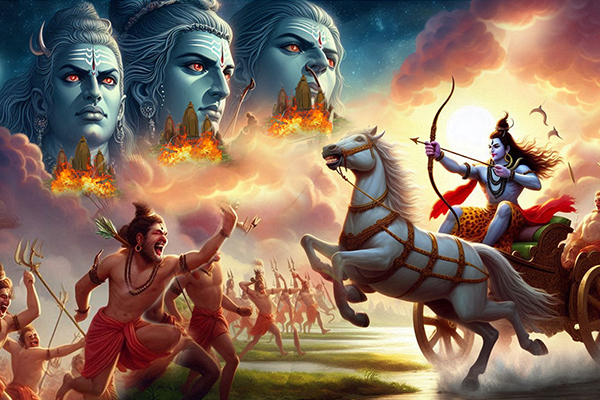
Bhagawan Shiva commissioned Bhagawan Vishvakarma, the Gods' architect, to create a gold chariot and a special bow and arrow. Bhagawan Brahma was transformed into a charioteer. Bhagawan Shiva rode the chariot towards Tripurasura on Kartik Purnima and fired a single arrow from his most destructive weapon, the Pashupatastra. Tripurasura and the three cities were instantly reduced to ashes.
As a result, Bhagawan Shiva became known as 'Tripurantaka' or 'Tripurari.' Dev Deepawali is also referred to as 'Tripurotsav' or 'Tripurari Purnima.' On Dev Deepawali, the Gods descend to earth to bathe in the Ganges. To commemorate the demon's defeat, the Devas lit diyas and bathed in the Ganges. Thus, the tradition of celebrating Dev Deepawali began.
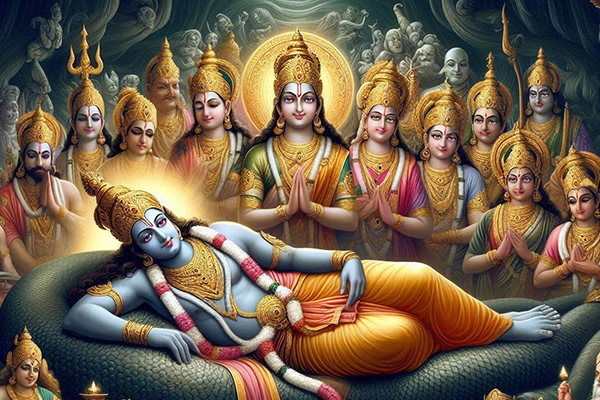
According to another legend, Bhagawan Vishnu wakes up after four months of sleep on Dev Uthani Ekadashi, a few days before Kartik Purnima. It is said that to welcome him, the Gods descend from heaven. Goddess Lakshmi awakes before Bhagawan Vishnu. Hence, Dev Diwali is celebrated after 15 days of Diwali.
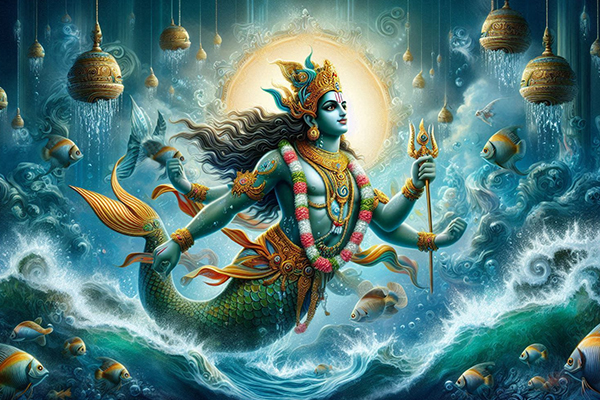
According to another legend, the first of Vishnu’s ten avatars, Matsya avatar was on this day. On this day, Bhagawan Shiva’s elder son, the warrior Kartikeya was born. According to another legend, on Kartik Ekadashi, Bhagawan Brahma awakens from sleep and on Kartik Chaturthi Bhagawan Shiva awakens.
Dev Diwali History
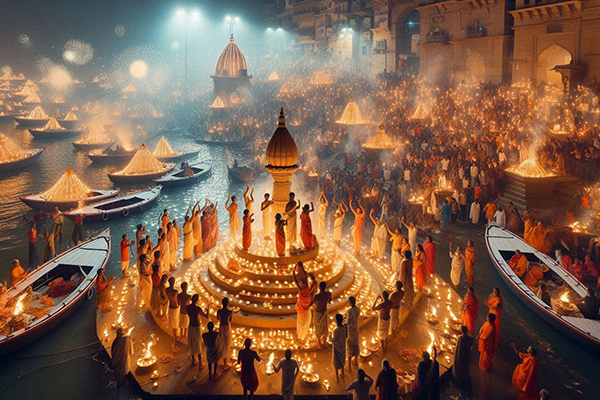
The ‘festival of light of the Gods’ was started in 1985 in Kashi by a group of enthusiastic youths led by a social worker named Narayani who lit lamps at Panchganga ghat. The tradition continued by lighting lamps on Dev Deepawali at the Dashashwamedh ghat led by Pandit Kishori Raman Dubey (Babu Maharaj) in 1991.
The festival is celebrated every year on the day of Kartik Purnima (full moon day), fifteen days after Diwali. It is believed that on this day, the Gods descend at Kashi to celebrate the festival. Hence, the ghats are illuminated like a beautiful bride with lamps and earthen diyas. On Dev Diwali, the ghats from Ravidas ghat at the southern end to Raj ghat seem mesmerizing like a stairway to heaven.
The Ganga river's water reflects the full moon's light as boats move away from the trail of diyas. It is an overwhelming sight that can only be witnessed if you are present. On Kartik Poornima, devotees from all over the world travel to the city to perform rituals at the Ghats. The Gods are said to bathe in the Ganges on Dev Diwali.
The very act of visiting the location at this time will instantly purge your mind of all negativities, and this is what Varanasi possesses. Everything about the place is extraordinary including this sedative festival which is still not known to many.
Dev Diwali Puja Vidhi
.)
- Wake up before sunrise and add a few drops of Gangajal to your bath. Those who reside near the Ganga's banks typically bathe in the river's sacred waters.
- Wear a pair of fresh clothes.
- If you are not fasting, consume foods without onion and garlic.
- Offer Arghya to the Sun God (Surya Dev).
- Later in the evening, before performing puja during Pradosh Kaal, take a bath and wear a fresh pair of clothes.
- Take a chowki and cover it with a yellow piece of fresh cloth.
- Place an idol of Bhagawan Ganesha and Shiva or Shiva Lingam.
- Light an oil or ghee lamp.
- Start the puja by offering prayers to Bhagawan Ganesha.
- Offer water to Bhagawan Ganesha, followed by haldi, chandan, kumkum, akshat, mauli, janeu, durva grass, gandham, pushpam, flowers, deepam, dhoop and naivedhya (food).
- Offer also two paan leaves, supari, coconut and fruits.
- Perform Abhishekam of Bhagawan Shiva with water, raw milk, honey, curd, ghee, panchamrit and bel patra.
- Conclude the puja by performing aarti.
Dev Diwali Puja Samagri List
Following are the list of Puja Samagri for Dev Diwali Puja:
- A chowki
- An idol of Bhagawan Ganesha and Bhagawan Shiva or a Shivling
- Brass or earthen lamps
- Oil or ghee for lamp and cotton wicks
- A yellow piece of cloth
- Mauli
- Janeu
- Bel Patra
- Durva grass
- Flowers
- Perfume
- Dhoop
- Naiveidhya
- Fruits
- Tambloom - paan, coconut supari and banana (two sets)
- Haldi
- Kumkum or Roli
- Chandan
- A fresh piece of cloth or unused towel
- For Abhishek- raw milk, water, honey, curd, panchamrit and ghee
- Gangajal
- Camphor
Kartik Purnima in Sikhism
Nanakpanthi Hindus and other followers of the sect celebrate the birthday of Guru Nanak on Kartik Purnima. It is also known as Gurpurab or Prakash Parva.
Kartik Purnima in Jainism
On Kartik Purnima, Sage Rishabha, also known as Sdinstha, the first tirthankara and founder of Jainism, sanctified the Shatrunjay hills in Palitana, Gujarat, and delivered his first sermon. On the Shatrunjay hills, millions of sadhus and sadhvis have found salvation. Jains take part in the Shantrunjay Teerth Yatra, a 216-kilometer walk to pay their respects at the Bhagawan Adinath temple.
Dev Diwali Significance

Dev Diwali, a sacred occasion, honors the victory of righteousness over malevolence and the divine warmth that removes all darkness. It holds various meanings and interpretations:
The victorious tale of Bhagwan Shiva's conquest over Tripurasura: Dev Diwali is a celebration that honors the triumph of Bhagwan Shiva over the formidable demon Tripurasura. It is also referred to as Tripura Utsav.
A tale of divine presence on Earth: During Dev Diwali, it is widely believed that the gods grace Earth with their presence, choosing to cleanse themselves in the sacred waters of the Ganges River.
A tale unfolds, revealing the miraculous arrival of Bhagwan Karthik: Dev Diwali is a special occasion that honors the birth anniversary of Bhagwan Karthik, the mighty God of War.
The divine manifestation of Bhagwan Vishnu as Matsya: Dev Diwali is a special occasion that commemorates the day when Bhagwan Vishnu took on the form of Matsya.
The celebration of Dev Diwali is a grand affair, filled with joy and excitement, particularly in Varanasi, Uttar Pradesh, and certain regions of Gujarat.

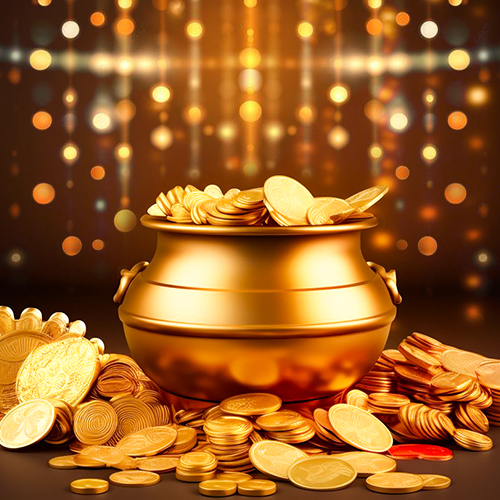
-in-Astrology.jpg)
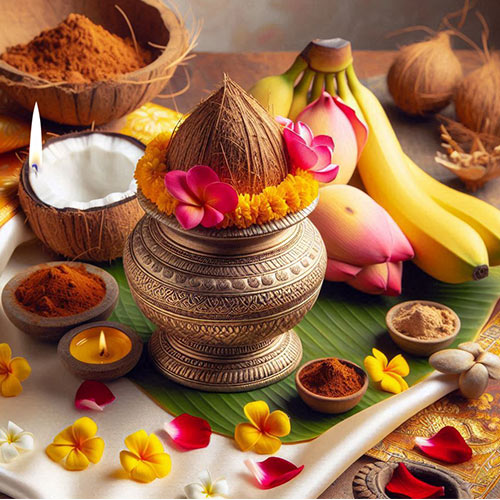
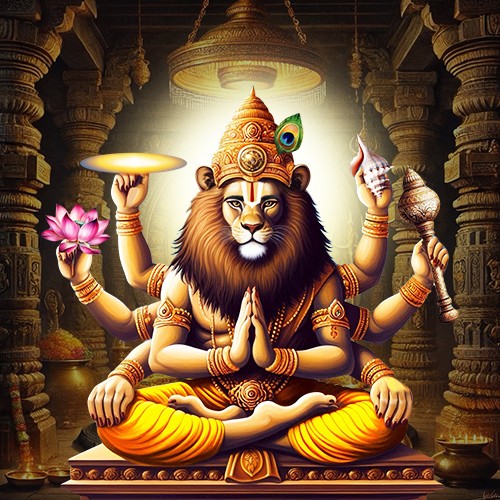
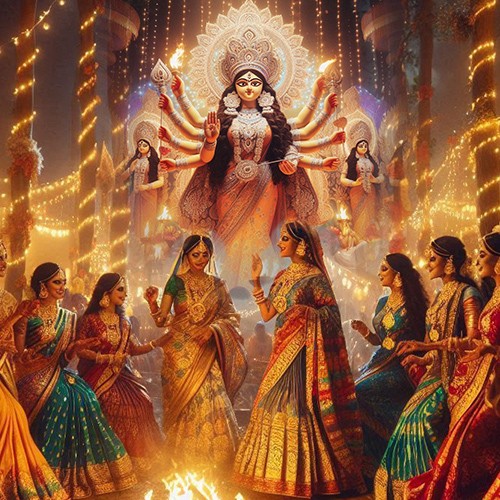
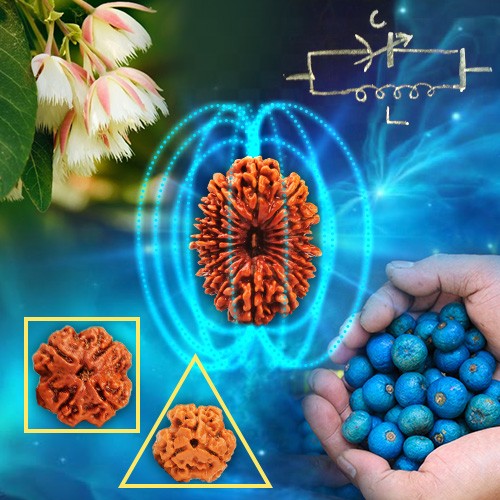

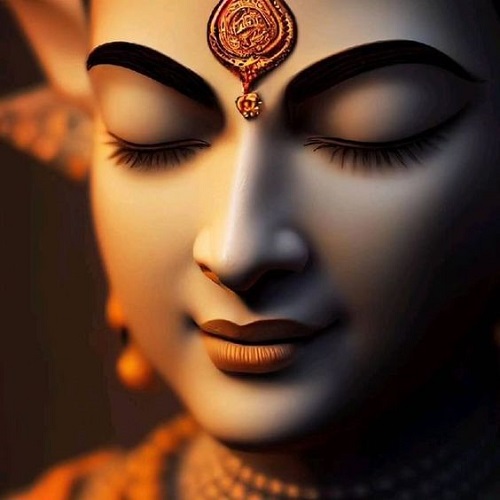
.jpg)
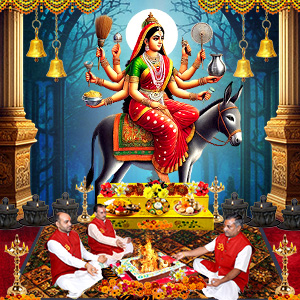
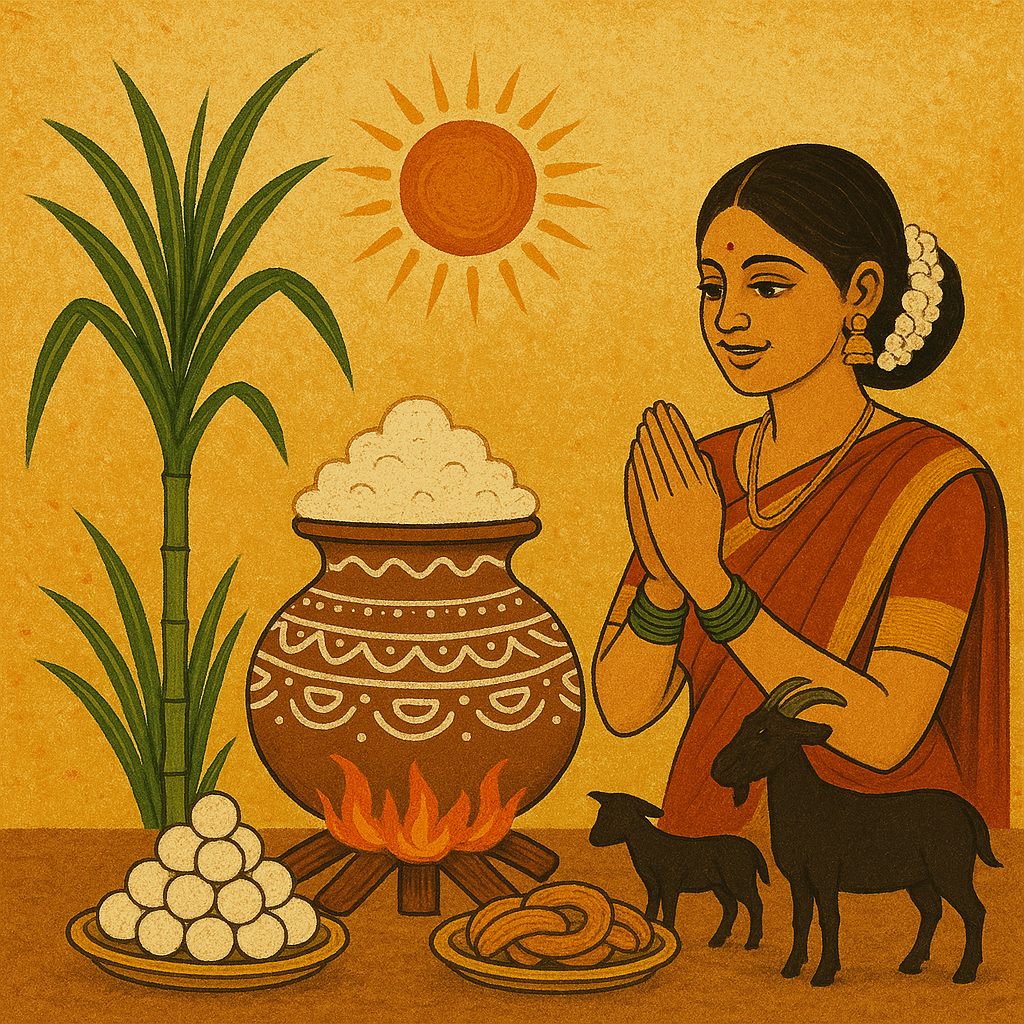
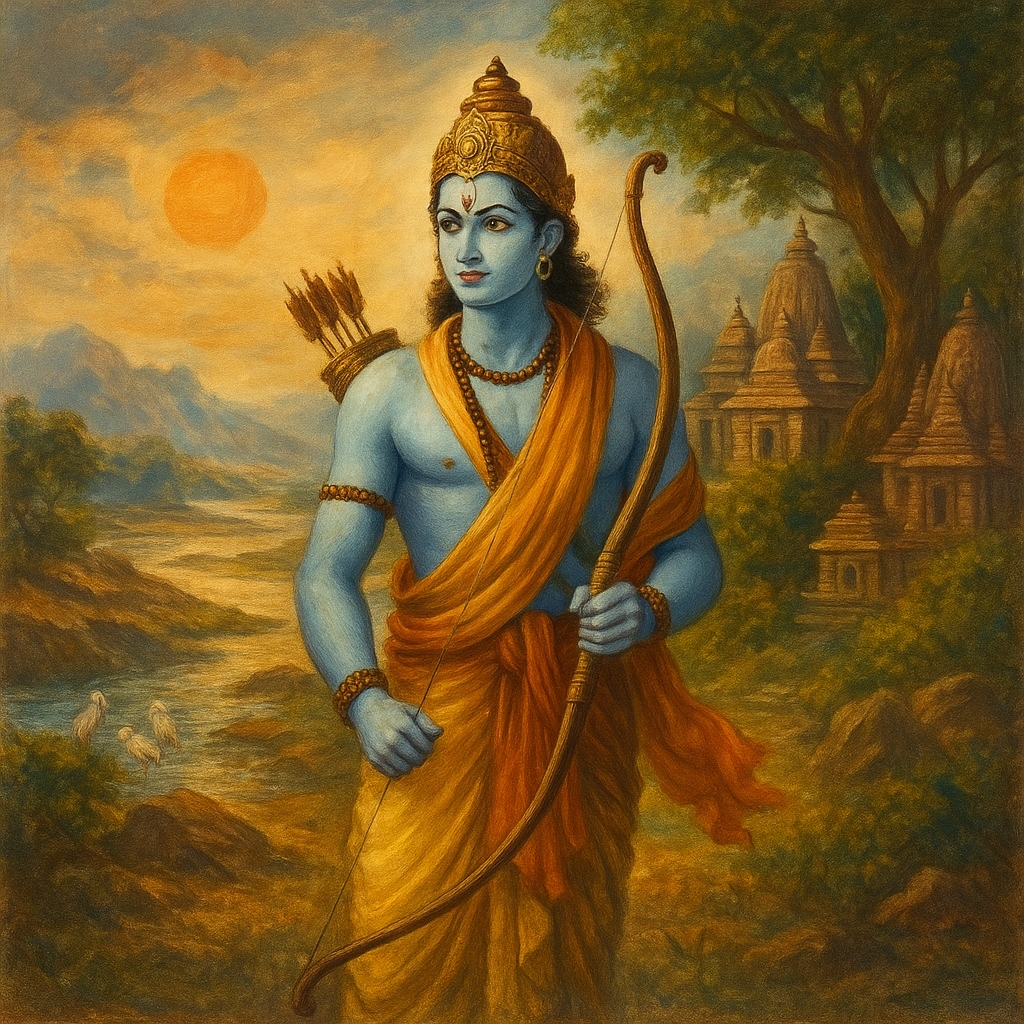
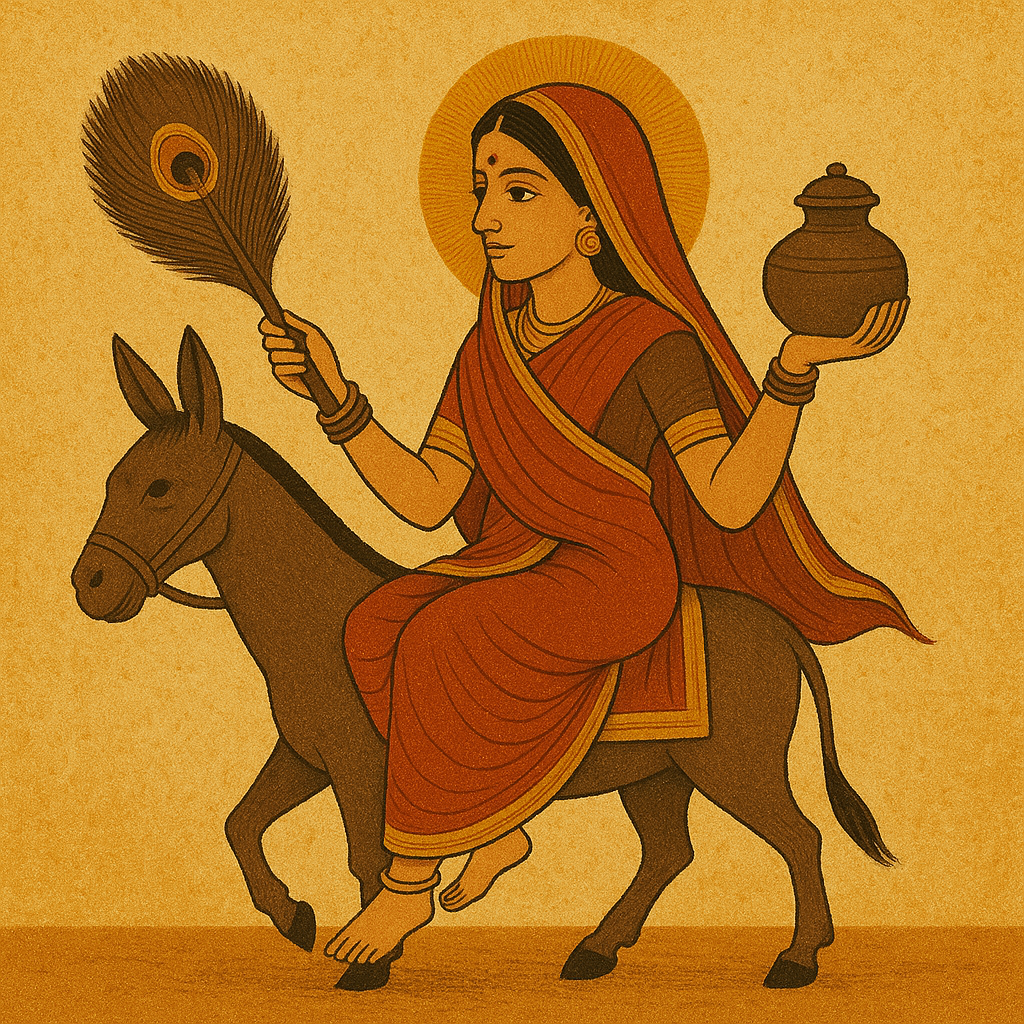
Comments 0
Leave your thought here